Tempesta di Mare turns 20 this year! It’s a big one! Hip hip hooray! And with thanks to Henry Purcell and his Ode for Queen Mary’s Birthday in 1694:
“Come, ye Sons of Art, come away,
Tune all your voices and instruments play
To celebrate this triumphant day…”
“…Strike the Viol, touch the Lute;
Wake the Harp, inspire the Flute…”
words by Nahum Tate
That’s right! Grab that viol, bust out that flute, stomp those feet and give a whoop! Happy birthday, Tempesta di Mare!
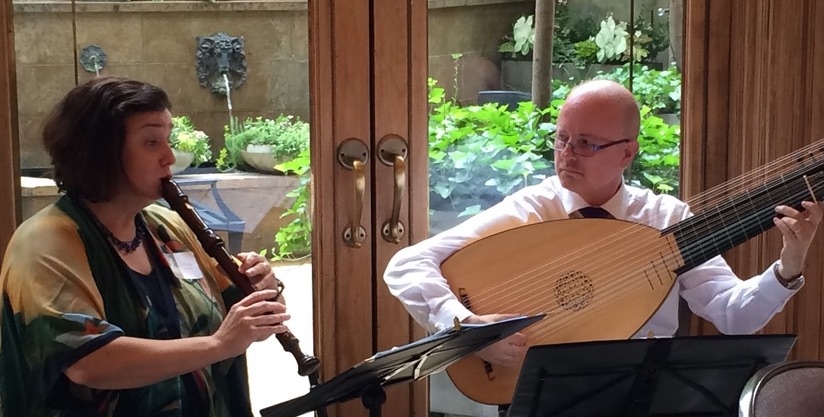
There’s so much to celebrate. The 20-year numbers alone are stunning. 20 full seasons with 375 concerts by more than 70 composers and recitals, artist chats and city-wide events. 12 CDs on the British label Chandos. More than 60 million annual US broadcast listeners, including 175 appearances on Performance Today. Broadcasts in nearly 60 countries worldwide with millions listening in. Innumerable tours across the country, from New England to Florida to Los Angeles to Honolulu. Four international tours, with a fifth on the way. Tempesta enters its third decade with a solid identity as a respected and beloved figure in international baroque music performance.
The best baroque music you’ve never heard before
But numbers are only part of it. They don’t show almost the best part, which is how Tempesta got to be where it is, every bit of the way, by following its heart. Gwyn Roberts and Richard Stone, artistic co-directors, founded Tempesta with a mission to find and rehabilitate the best buried treasures in baroque music and despite 20 tough years that have been tough on independent non-profits, including the Great Recession and the pandemic, they never even blinked.
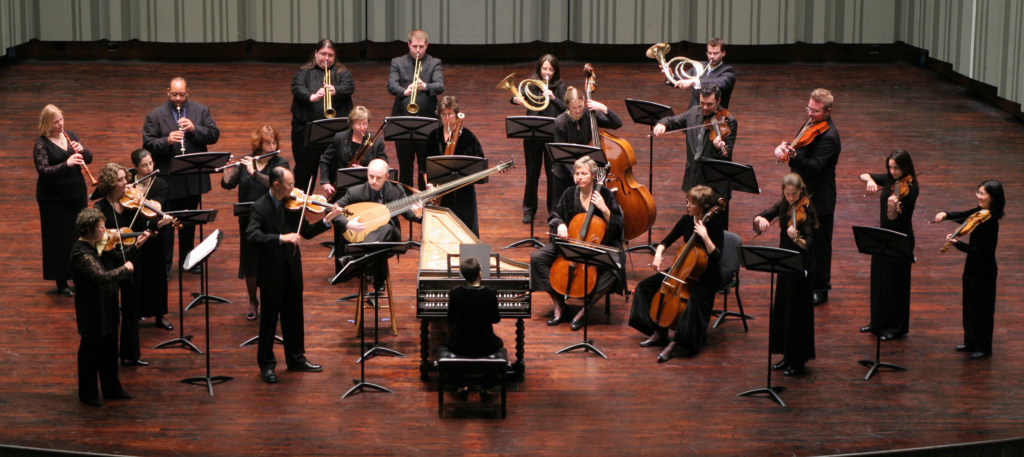
Richard recalls what led up to launching Tempesta back in 2002. “We were playing in really nicely organized concerts with great colleagues. But we knew that there was so much more out there and we had to find it.” Baroque music in America had in general a very narrow playlist at the time: Bach, Handel, the Vivaldi Four Seasons, the Pachelbel canon. Gwyn and Richard felt it was imperative to their field and to their own needs and growth as musicians to pursue the lesser-known, the misunderstood, and the unknown outside the mainstream of the music they love.
Charting A new path in the City of Brotherly Love
From the very start, with their first season, Gwyn and Richard left the beaten path. In practical terms, it could have been a very risky move. Tempesta audiences today know to expect the unknown, but in 2002, they didn’t. And back then, Philadelphia could be unwelcoming to historically-informed baroque performance. As a proud guardian of 19th and 20th-century musical traditions, the city’s musical world was cool to the early music revival’s rebellious upstarts. Several good-faith attempt at founding a baroque orchestra in Philadelphia had fizzled only years before.
Knowing that, a new group like Tempesta might have played it safe and offered maybe the Four Seasons or a Brandenburg for their debut. Not Gwyn and Richard. Tempesta’s first show was Concerti for the Dresden Hofkapelle: Showpieces for Baroque Europe’s Most Spectacular Orchestra—a program with names like C. H. Graun, J. D. Heinichen, and Silvius Leopold Weiss and nary a Bach in sight.
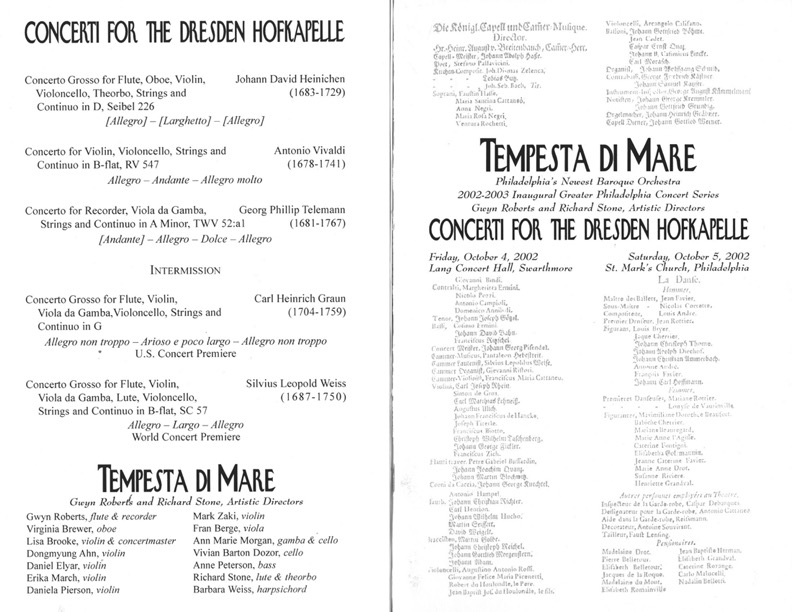
Those early audience members liked what they heard, though. They liked it a lot. They came back and brought friends and Tempesta was on its way. Twenty years later, Graun, Heinichen and lute virtuoso Weiss are old favorites to Tempesta audiences, along with scores of new discoveries. Over the course of 20 years, the group has offered 35 modern world premieres on its series (works never before played in modern times).
BFF’s: Bach, Telemann, handel & Fasch
Tempesta plays Bach and Handel too, of course. Gwyn and Richard consider their 2015 CD of the Bach organ sonatas (as “re-imagined” for chamber group), Bach: Six Trio Sonatas, among their favorite projects.
To them, though, Bach, Handel and other present-day baroque famous-namers are not isolated geniuses; as remarkable as they are individually, they are also members of a remarkable community. By its second decade, Tempesta was ready for a deeper look into that community. In the 2010s, they launched in-depth, often multi-year, explorations of a single composer or national genre of music, thoroughly immersing the entire ensemble in the unique flavors, colors and sonic landscapes offered by their subject.
Digging deeper
To date, these “deep dives” include J. F. Fasch, one of those superstars in the Dresden Hofkapelle circle; theatre music from Versailles and the Paris Opera; J. G. Janitsch, from Frederick the Great’s Berlin; and a multi-media, multi-project, multi-everything focus on G. P. Telemann, Telemann 360°.
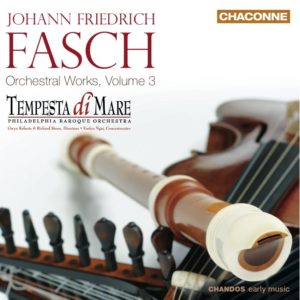
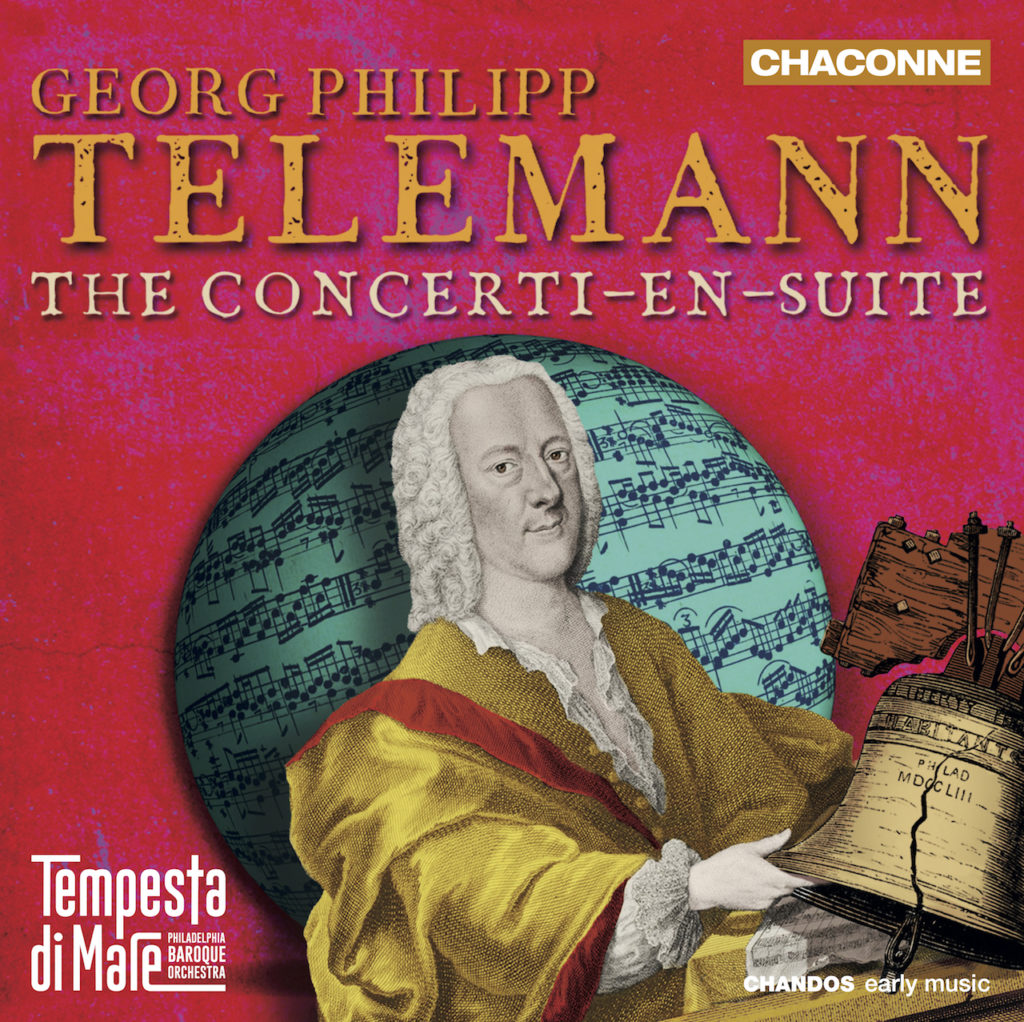
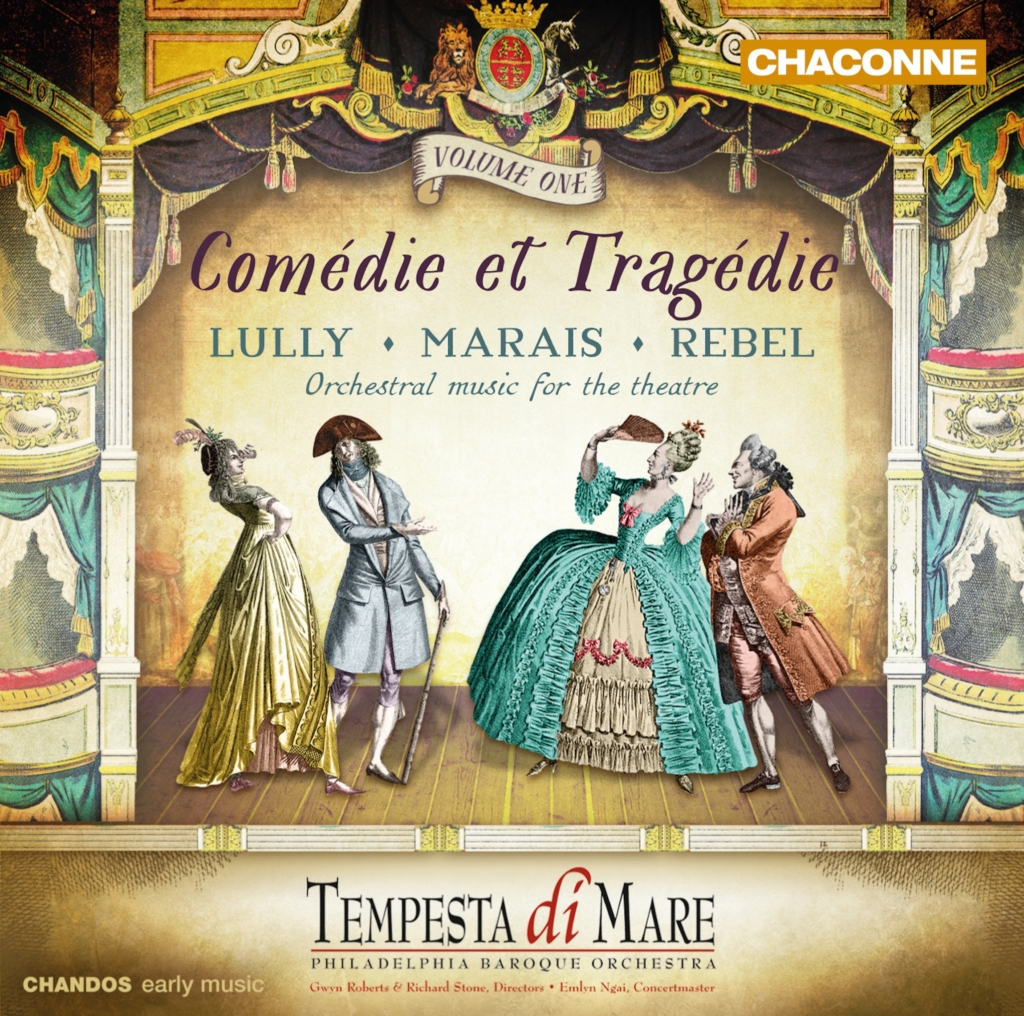
Comédie et Tragédie
Out of all the many achievements from the past two decades, these deep dives may be closest to Gwyn and Richard’s hearts. For Gwyn, the Telemann project is her favorite. “I just loved the whole thing. I loved the talk show, I loved doing things around the city with different partners like Bartram’s Garden. I loved performing a Telemann cantata in Lancaster that had premiered in that exact church in that exact building while Telemann was still alive.”
And she loves that Tempesta’s Telemann concert in the Kimmel Center’s Perelman Theatre led to an invitation to perform at the composer’s birthplace in the Magdeburg Telemann Festival as part of an overseas tour next March. They’ll be the first non-European orchestra ever so honored by the festival’s organizers (not to brag or anything).
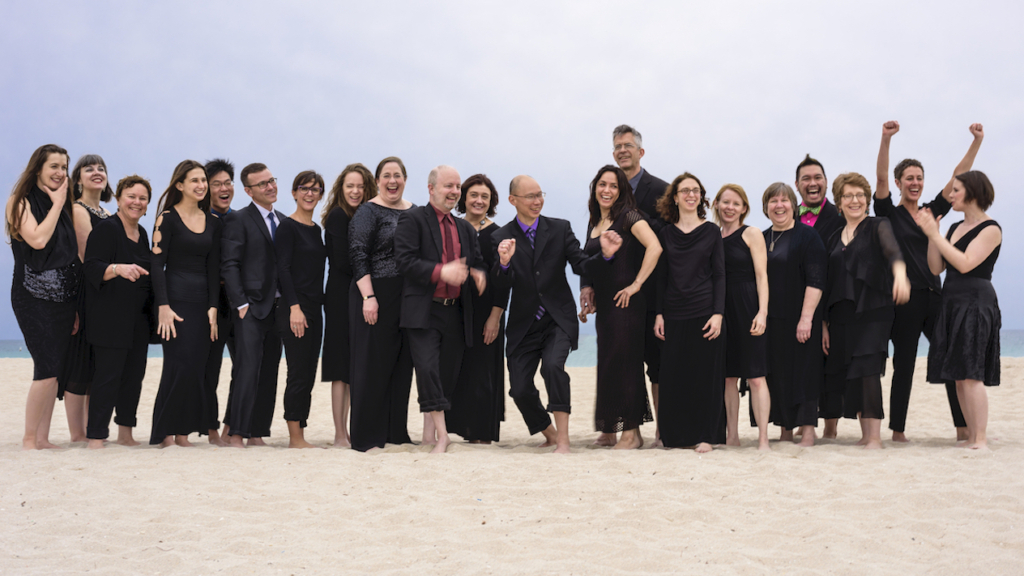
But wait, there is more
Richard’s already getting ready for the next deep dive: baroque music of Vienna and Austria. No, you won’t know the names, or many of them. But soon, you’ll love them.
For Tempesta’s anniversary season, Gwyn and Richard are offering two programs with a special selection of the greatest hits of twenty years (and some premieres too, because they are after all Tempesta). They’re dancing with those who brought them.
Congratulations Tempesta! Long may you wave!
Anne Schuster Hunter is a writer, teacher of creative writing, and art historian in Philadelphia. www.anneschusterhunter.com.
